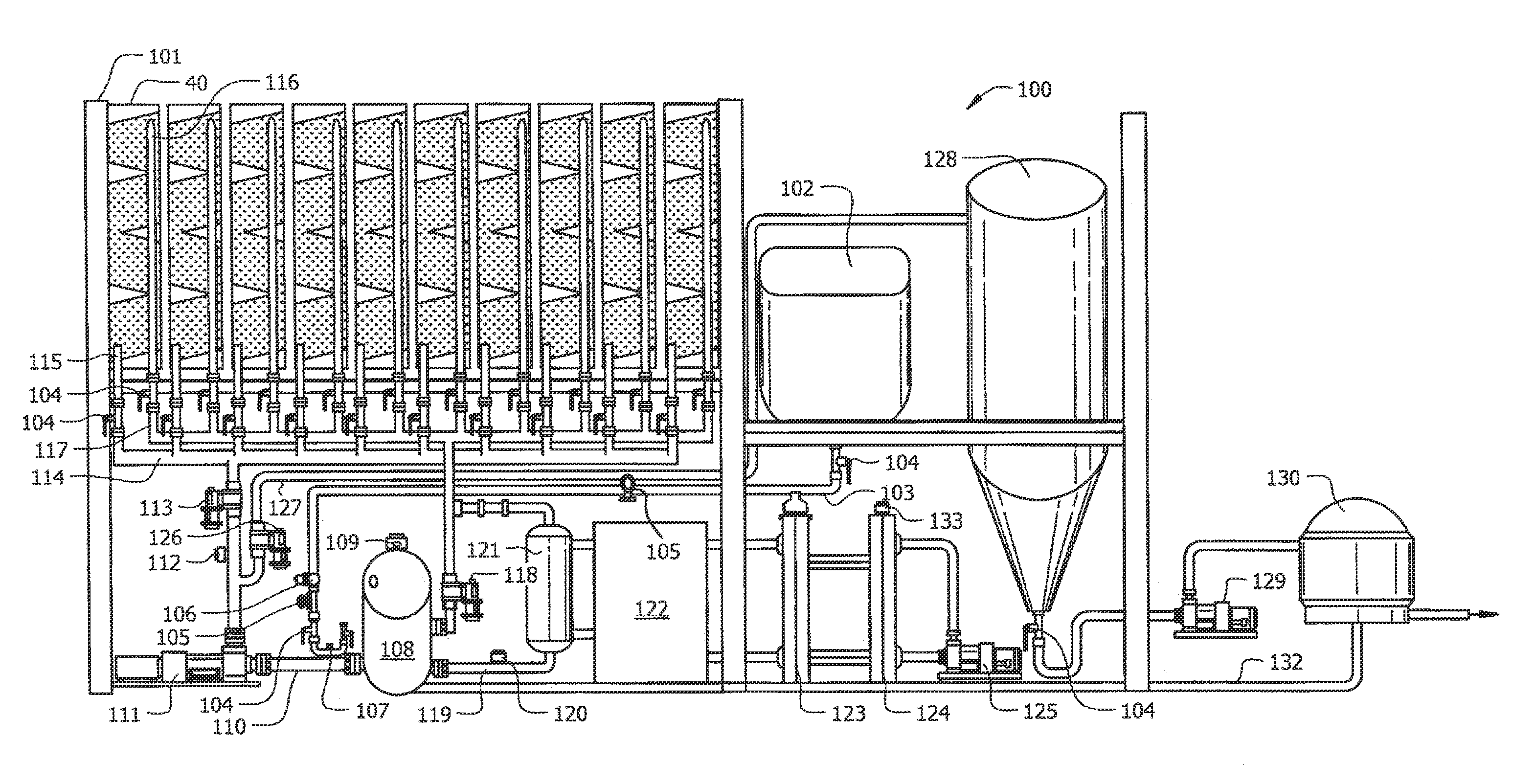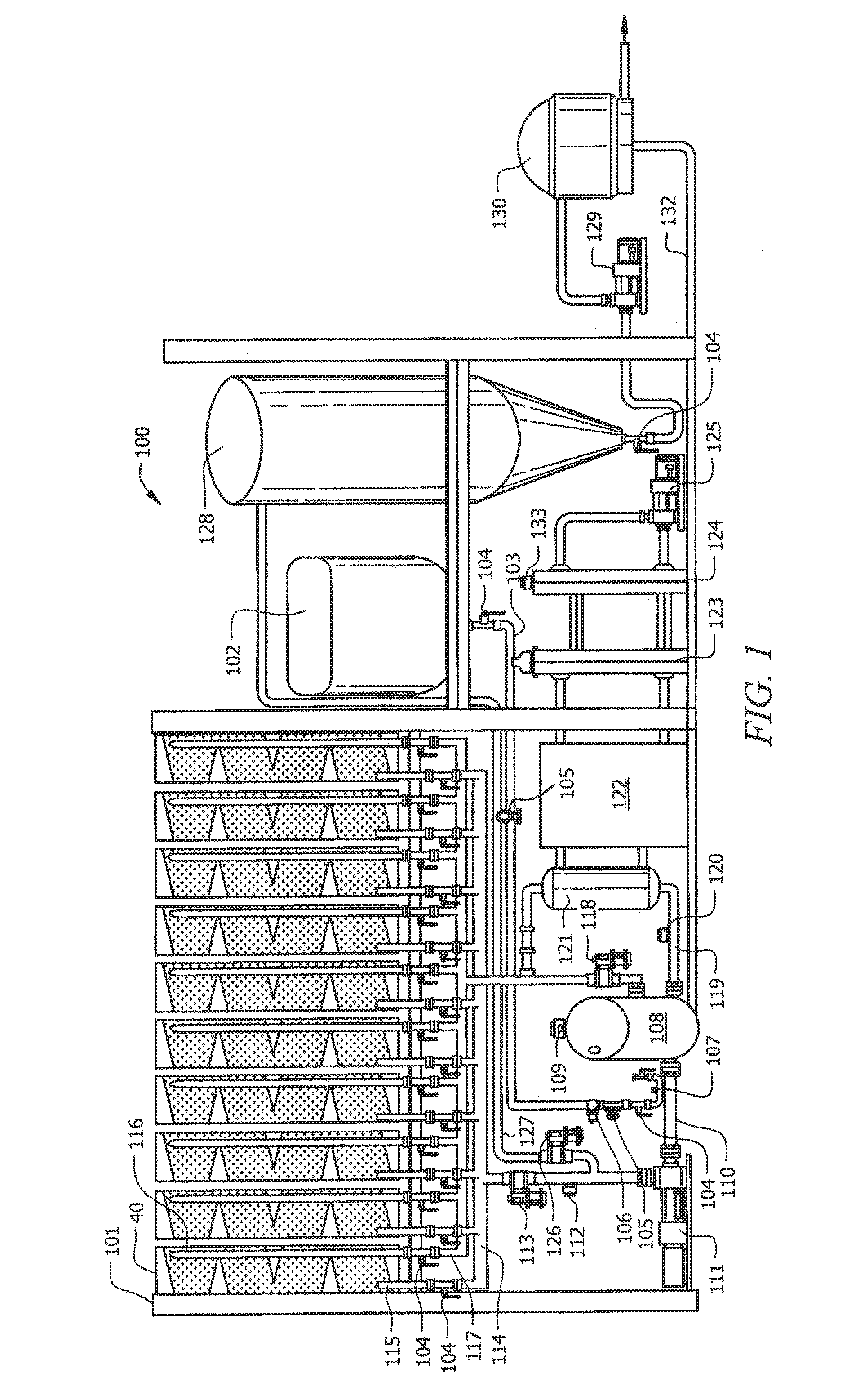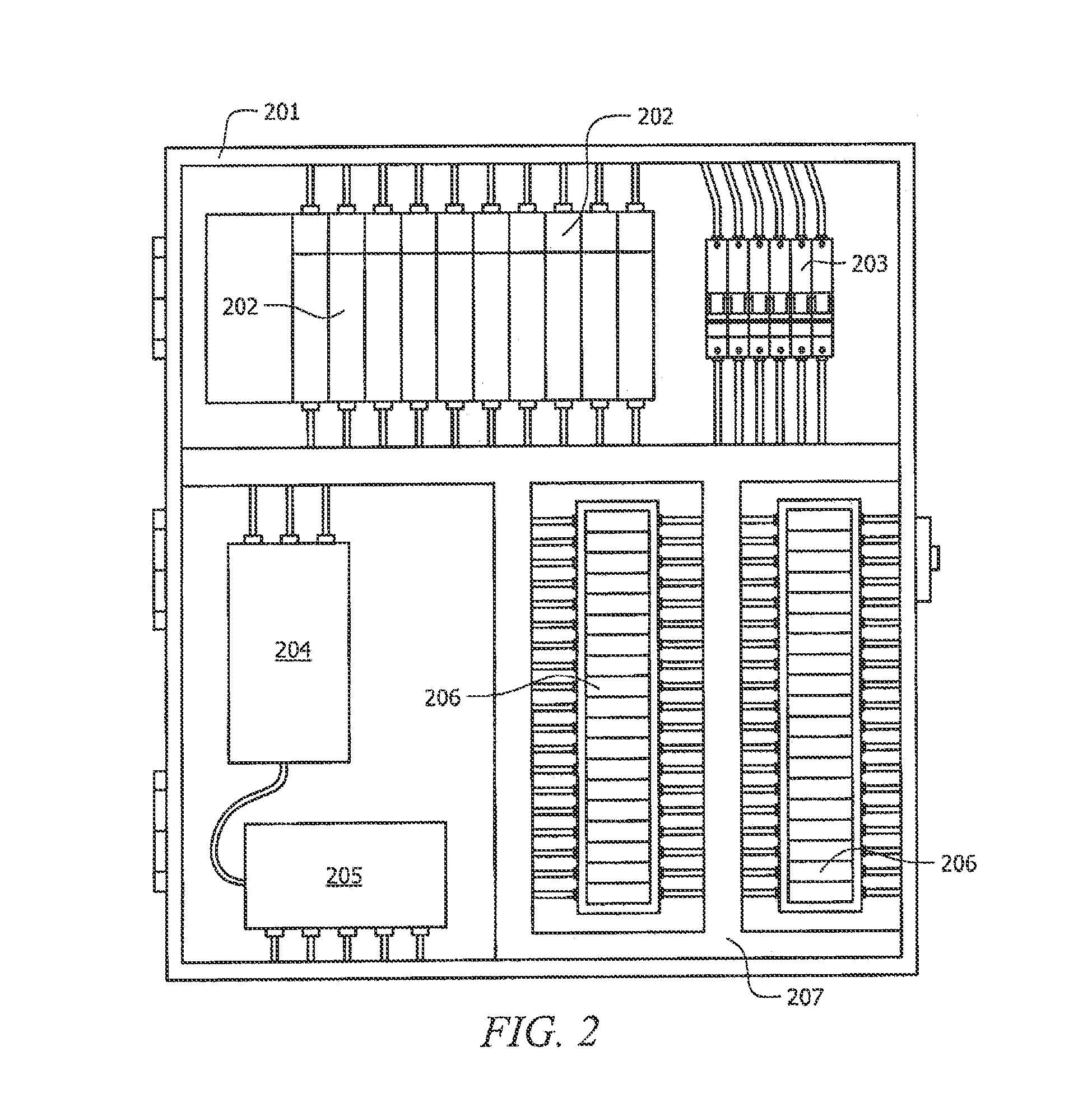Method of removing algae adhered inside a bioreactor through combined backwashing and lowering of pH level
a bioreactor and algae technology, applied in the field of algae removal inside a bioreactor through combined backwashing and lowering of ph level, can solve the problems of reducing yield, reducing the efficiency of long-term use, or even making it impossible, affecting the amount of light available, etc., to achieve superior cleaning, improve the ph of the solution, and improve the effect of ph
- Summary
- Abstract
- Description
- Claims
- Application Information
AI Technical Summary
Benefits of technology
Problems solved by technology
Method used
Image
Examples
Embodiment Construction
[0051]FIG. 1 shows an embodiment of bioreactor 100 in which a slurry of nutrients, carbon dioxide, water, and algae are circulated through a distribution system that exposes the slurry to light in order to facilitate the growth and cultivation of microscopic algae. In this embodiment, the components of the substantially self-contained system are mounted onto frame structure 101 that supports the various components in such a way that the entire system is easy to assemble using system components and that facilitates the replacement of independent components should any of the individual components be damaged or otherwise malfunction. Bioreactor panels 40 are mounted side by side in the bioreactor panel rack of frame structure 101 to facilitate quick installation and panel replacement. In the preferred embodiment, bioreactor panels 40 are mounted in an elevated configuration above other components of bioreactor 100. In the embodiment shown in FIG. 1, nutrients needed to promote algae gr...
PUM
 Login to View More
Login to View More Abstract
Description
Claims
Application Information
 Login to View More
Login to View More - R&D
- Intellectual Property
- Life Sciences
- Materials
- Tech Scout
- Unparalleled Data Quality
- Higher Quality Content
- 60% Fewer Hallucinations
Browse by: Latest US Patents, China's latest patents, Technical Efficacy Thesaurus, Application Domain, Technology Topic, Popular Technical Reports.
© 2025 PatSnap. All rights reserved.Legal|Privacy policy|Modern Slavery Act Transparency Statement|Sitemap|About US| Contact US: help@patsnap.com



